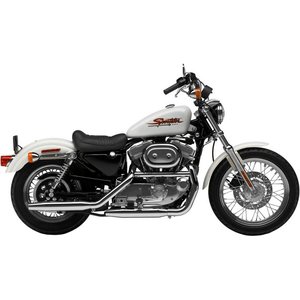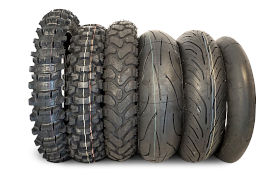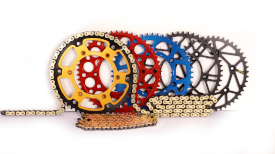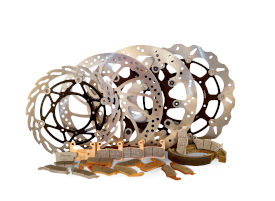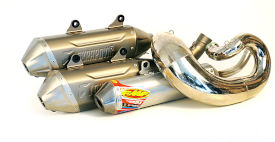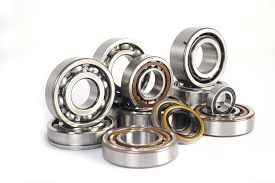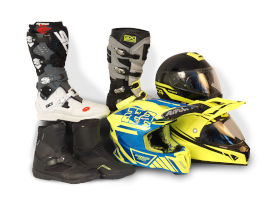Harley-Davidson Sportster Hugger [1986 – 2003]: A Timeless Cruiser for the Soulful Rider
For nearly two decades, the Harley-Davidson Sportster Hugger (XLH 883) carved its name into motorcycle history as a quintessential entry-point into the world of American cruisers. With its low-slung profile, rumbling V-twin heart, and unmistakable Harley-Davidson DNA, the Hugger became a favorite for riders seeking authenticity without the bulk of larger touring models. This review dives into what made this generation iconic, how it feels to ride, and why it remains a beloved platform for customization.
Design & Ergonomics: The "Hugger" Philosophy
The Sportster Hugger’s defining trait is its 27.1-inch (689 mm) seat height—a deliberate design choice to make the bike more accessible to shorter riders while maintaining a muscular stance. Compared to the standard Sportster’s taller perch, the Hugger’s sculpted seat and repositioned suspension components create a confident, grounded feel. Sliding onto the saddle feels like slipping into a well-worn leather jacket: familiar, comfortable, and instantly reassuring.
Visually, the Hugger stayed true to Harley’s minimalist cruiser formula. The teardrop fuel tank (12.5 liters / 3.3 US gallons), chrome accents, and signature peanut-shaped engine covers oozed retro charm. Over its production run, color options ranged from bold Vivid Black and Luxury Rich Red Pearl to playful Lilac and Gunmetal Gray, ensuring riders could express individuality. The 59.3-inch (1505 mm) wheelbase and 518-pound (235 kg) dry weight gave it a planted, stable posture, though its narrow handlebars and mid-mounted controls kept the riding position relaxed rather than stretched-out.
Engine & Performance: The Heartbeat of Milwaukee
At the core of the Hugger lies Harley’s 883cc Evolution V-twin engine, air-cooled and carbureted for most of its lifespan. Output figures varied slightly over the years, peaking at 53 HP (39 kW) @ 6,000 RPM and 67 Nm (49.4 lb-ft) @ 4,400 RPM in later models like the 2001 variant. While these numbers won’t set drag strips ablaze, the Hugger’s charm lies in its torque-rich character.
Twist the throttle, and the engine responds with a lazy, loping growl that builds into a satisfying bark as RPMs climb. Acceleration is linear rather than explosive, with enough grunt to push the bike to a top speed of 104 mph (168 km/h). The 5-speed transmission shifts with a mechanical clunk that purists adore, though neutral can be elusive at stoplights. The belt final drive (replacing chains in later models) operates silently and requires minimal maintenance—a boon for weekend warriors.
Key Nuances: - Early models (pre-1991) used a 4-speed gearbox and weaker 24 HP configurations for certain markets. - By 2003, the Hugger adopted a slightly revised carburetor and hydraulic lifters, reducing valve-adjustment headaches.
Riding Experience: Where the Hugger Shines (and Stumbles)
Urban Crawling
In city traffic, the Hugger is in its element. The low seat height lets riders plant both feet firmly at stops, while the narrow frame filters through traffic with ease. The torquey engine pulls cleanly from idle, making stop-and-go riding effortless. However, the single-disc brakes (292 mm front/rear) demand a firm squeeze, especially when laden with a passenger.
Highway Manners
At 70 mph (113 km/h), the Hugger feels stable but vocal. The air-cooled V-twin transmits vibrations through the seat and bars, a characteristic Harley "massage" that charms some and fatigues others. Wind protection is nonexistent, so sustained highway rides require grit (or an aftermarket windshield). Fuel economy hovers around 45-50 mpg (5.2-4.7 L/100 km), giving a realistic range of 140 miles (225 km) before hitting reserve.
Twisties & Backroads
Don’t expect sportbike agility. The Hugger’s 49% front/51% rear weight distribution and limited suspension travel (4.1 inches front / 2.1 inches rear) make it a reluctant cornering partner. Yet, there’s joy in its predictability. Lean it into a bend, and the chassis communicates clearly, albeit with footpeg scraping arriving early. The Dunlop K177 tires (100/90-19 front, 130/90-16 rear) offer ample grip for casual riding.
Competition: How the Hugger Stacks Up
Honda Shadow VLX 600
- Pros: Smoother engine, lighter (476 lbs / 216 kg), lower maintenance.
- Cons: Less torque (45 lb-ft), generic exhaust note, lacks Harley’s cachet.
Yamaha Virago 535
- Pros: V-twin character, liquid cooling, nimble handling.
- Cons: Smaller 535cc engine, dated shaft drive, plasticky components.
Triumph Bonneville T100
- Pros: Modern tech (fuel injection), superior suspension, retro-modern appeal.
- Cons: Higher price point, less low-end torque, European part costs.
Verdict: The Hugger’s biggest draw isn’t specs—it’s soul. While Japanese rivals often outperform it on paper, none replicate the Harley-Davidson experience: the visceral engine pulse, the community, and the endless customization potential.
Maintenance: Keeping Your Hugger Roaring
The Evolution engine is notoriously rugged, but neglect can turn it finicky. Here’s how to stay ahead:
Critical Service Items:
- Oil Changes: Use SAE 20W-50 (2.8L with filter). Skip synthetic blends; conventional oil aligns better with the engine’s loose tolerances.
- Primary Chaincase: Check tension every 5,000 miles (8,000 km). Over-tightening accelerates wear.
- Carburetor TLC: Clean jets annually if the bike sits. Ethanol-blended fuel clogs passages.
- Belt Drive: Inspect for cracks every 3,000 miles (4,800 km). Replace if frayed—MOTOPARTS.store stocks OEM-spec belts.
- Valve Adjustments: Hydraulic lifters (post-1999) eliminate manual adjustments—a huge plus.
Common Upgrades:
- Exhaust: Swap stock pipes for Screamin’ Eagle mufflers to unlock the V-twin’s true voice.
- Air Intake: High-flow filters improve throttle response but require jetting changes.
- Suspension: Progressive Suspension 412 shocks add 1.5” of travel for better comfort.
Final Thoughts: Why the Hugger Endures
The Sportster Hugger isn’t about perfection—it’s about personality. Its vibrations, minimalist tech, and analog feel are antidotes to today’s sterile, computer-controlled rides. For new riders, it’s an accessible gateway into cruiser culture. For veterans, it’s a blank canvas for customization. And for MOTOPARTS.store enthusiasts, it’s a treasure trove of upgrade opportunities, from vintage-style grips to modern LED lighting kits.
Whether you’re resurrecting a barn find or tweaking a daily rider, the Hugger rewards those who embrace its quirks. As the saying goes: “You don’t own a Harley—you join a family.” And this Sportster? It’s the family’s favorite cousin.
Specifications sheet
| Engine | |
|---|---|
| Stroke: | Four-stroke |
| Max power: | 53 kW | 71.0 hp |
| Max torque: | 67 Nm |
| Fuel system: | Carburettor |
| Max power @: | 6000 rpm |
| Displacement: | 883 ccm |
| Max torque @: | 4400 rpm |
| Bore x stroke: | 76.2 x 96.8 mm (3.0 x 3.8 in) |
| Configuration: | V |
| Cooling system: | Air |
| Compression ratio: | 9.0:1 |
| Number of cylinders: | 2 |
| Valves per cylinder: | 2 |
| Dimensions | |
|---|---|
| Wheelbase: | 1510 mm (59.4 in) |
| Dry weight: | 235 |
| Wet weight: | 235 |
| Seat height: | 688 mm (27.1 in) |
| Overall length: | 2230 mm (87.8 in) |
| Ground clearance: | 119 mm (4.7 in) |
| Fuel tank capacity: | 12.5 L (3.3 US gal) |
| Drivetrain | |
|---|---|
| Final drive: | belt |
| Transmission: | 5-speed |
| Gearbox oil capacity: | 0.95 L 85W-90 |
| Maintainance | |
|---|---|
| Rear tire: | 130/90-b16 |
| Engine oil: | 20W-50 |
| Front tire: | 100/90-19 |
| Break fluid: | DOT 5 |
| Spark plugs: | NGK DCPR7E or NGK DCPR7EIX |
| Spark plug gap: | 0.9 |
| Forks oil capacity: | 0.6 |
| Engine oil capacity: | 2.8 |
| Engine oil change interval: | Every 5000 km or 2 years |
| Valve clearance (intake, cold): | Hydraulic lifters (no adjustment) |
| Valve clearance (exhaust, cold): | Hydraulic lifters (no adjustment) |
| Additional Notes | |
|---|---|
| Idle speed: | 950-1000 RPM |
| Color options: | Vivid black, gunmetal pearl, luxury rich red pearl, white pearl, luxury blue pearl (varies by year) |
| Chassis and Suspension | |
|---|---|
| Rear brakes: | Single 292 mm disc, 1-piston caliper |
| Front brakes: | Single 292 mm disc, 1-piston caliper |
| Rear suspension: | Dual shocks, adjustable preload |
| Front suspension: | Telescopic fork, 39 mm stanchions |



